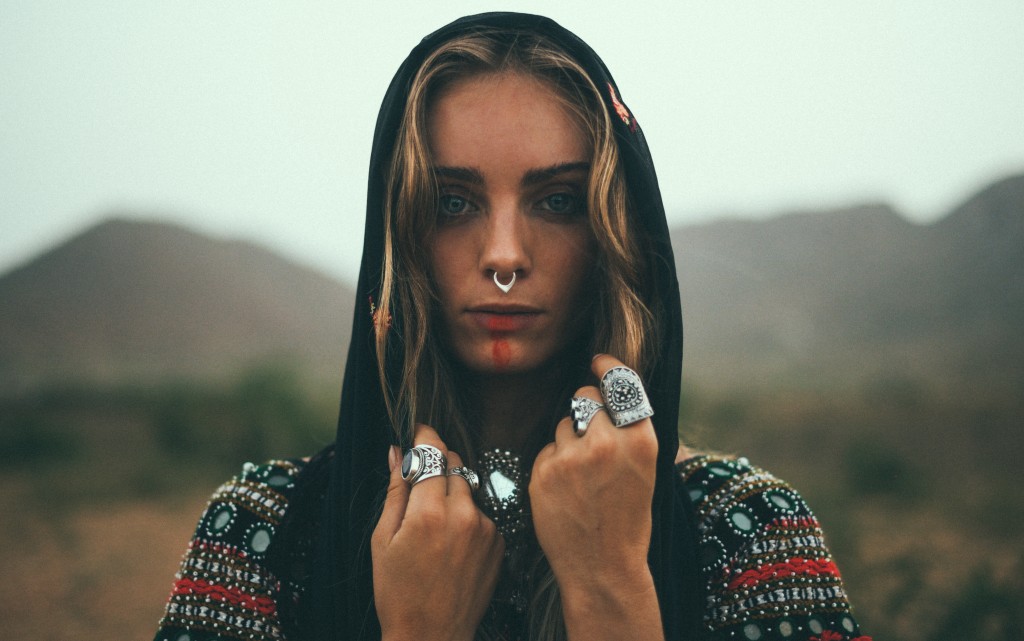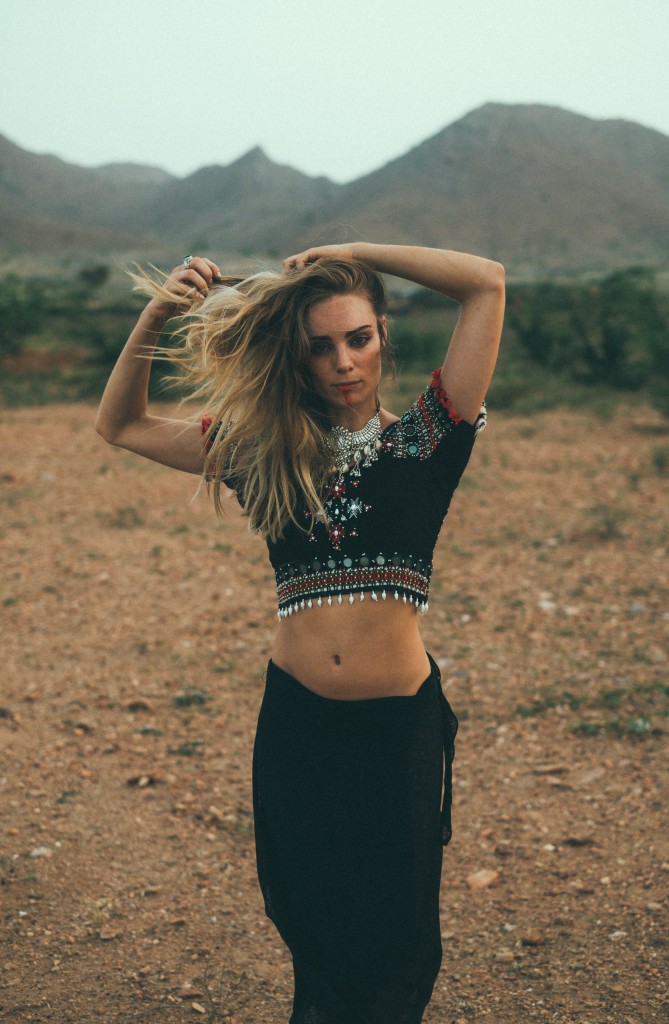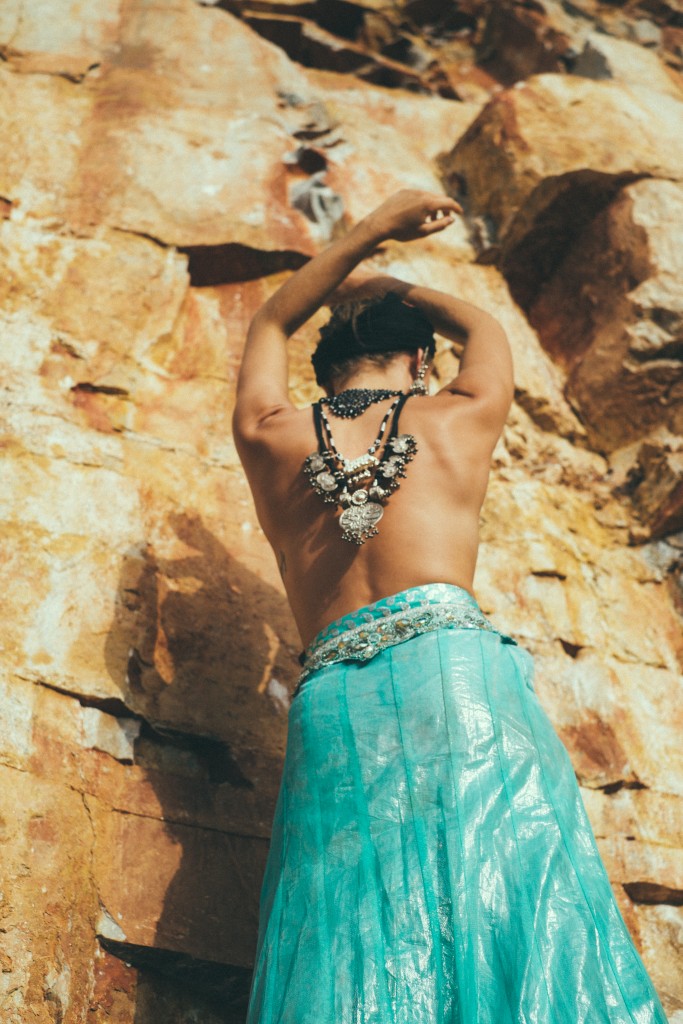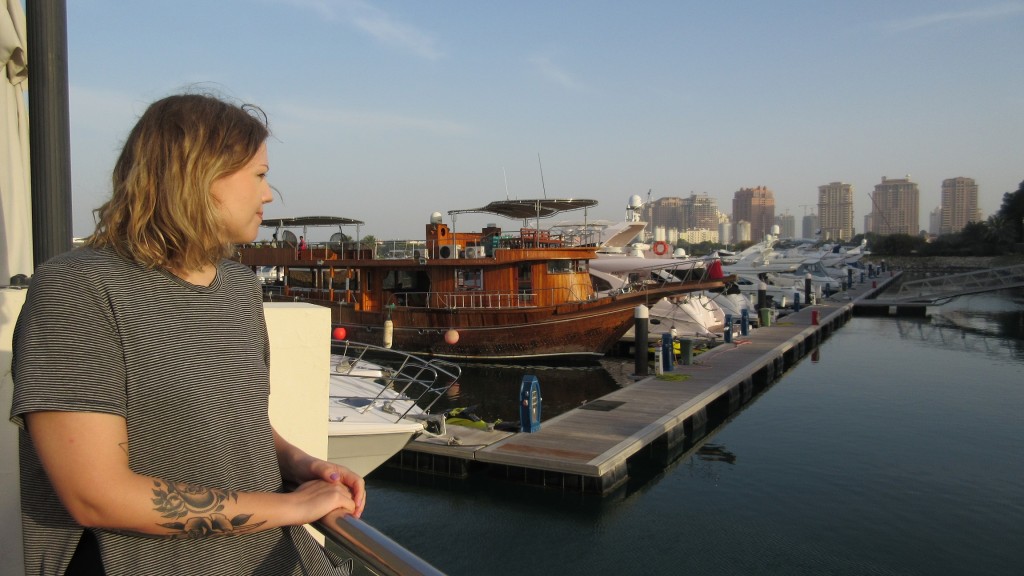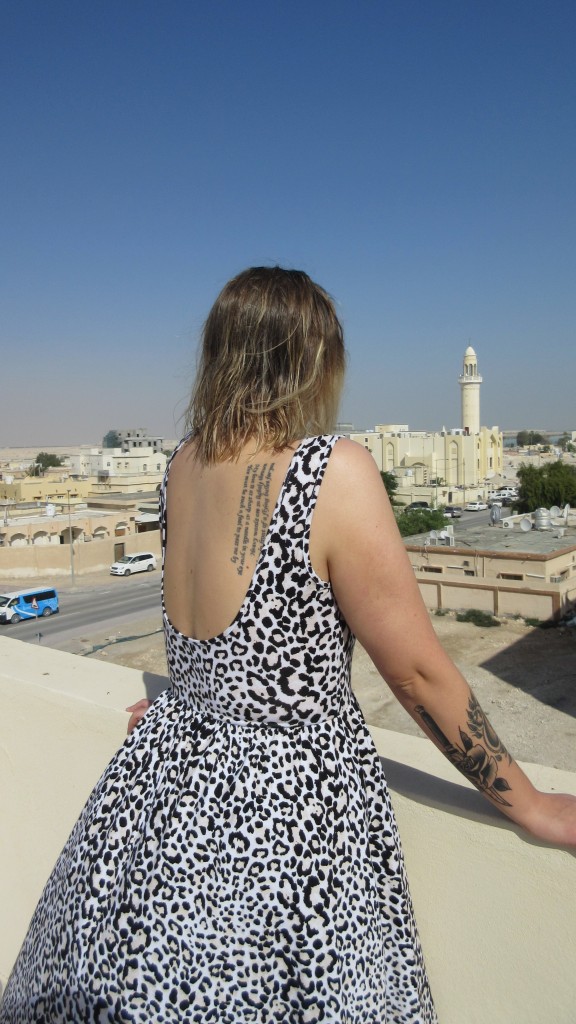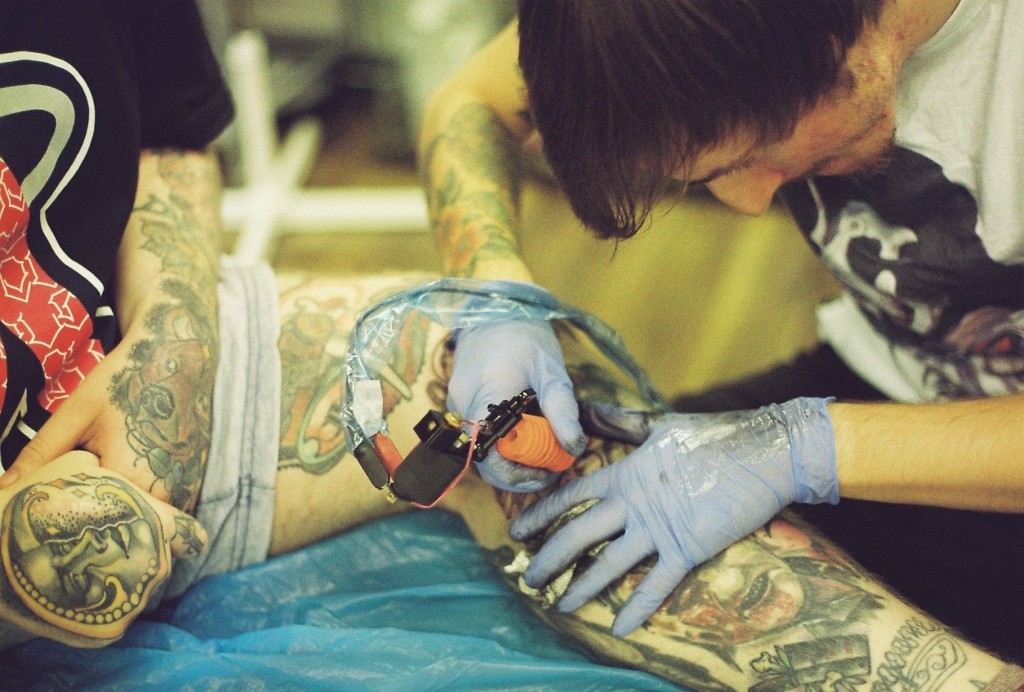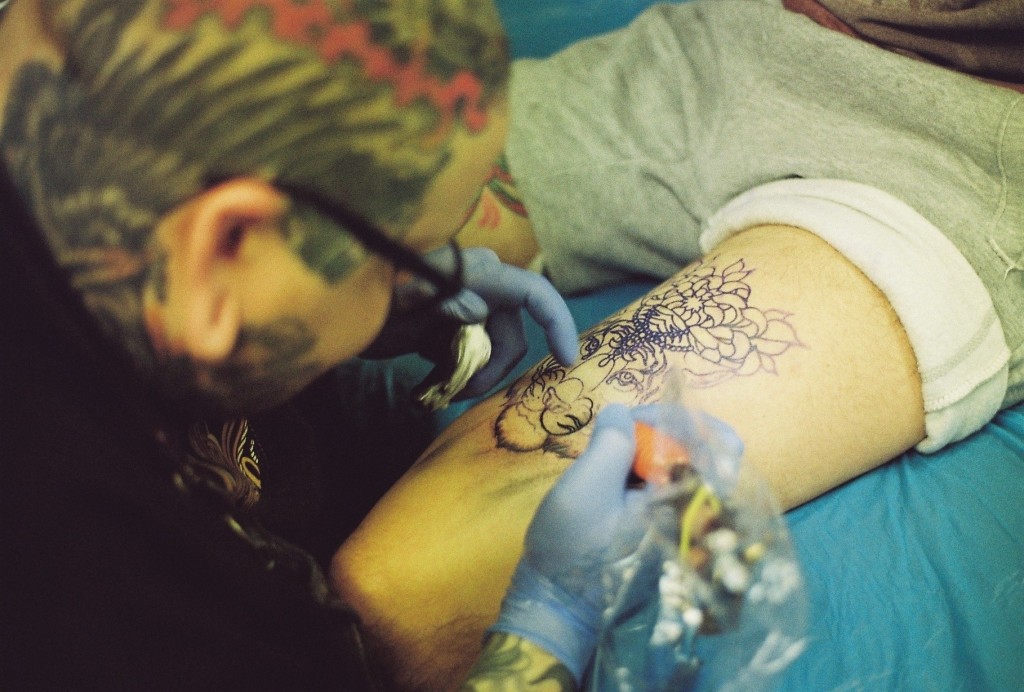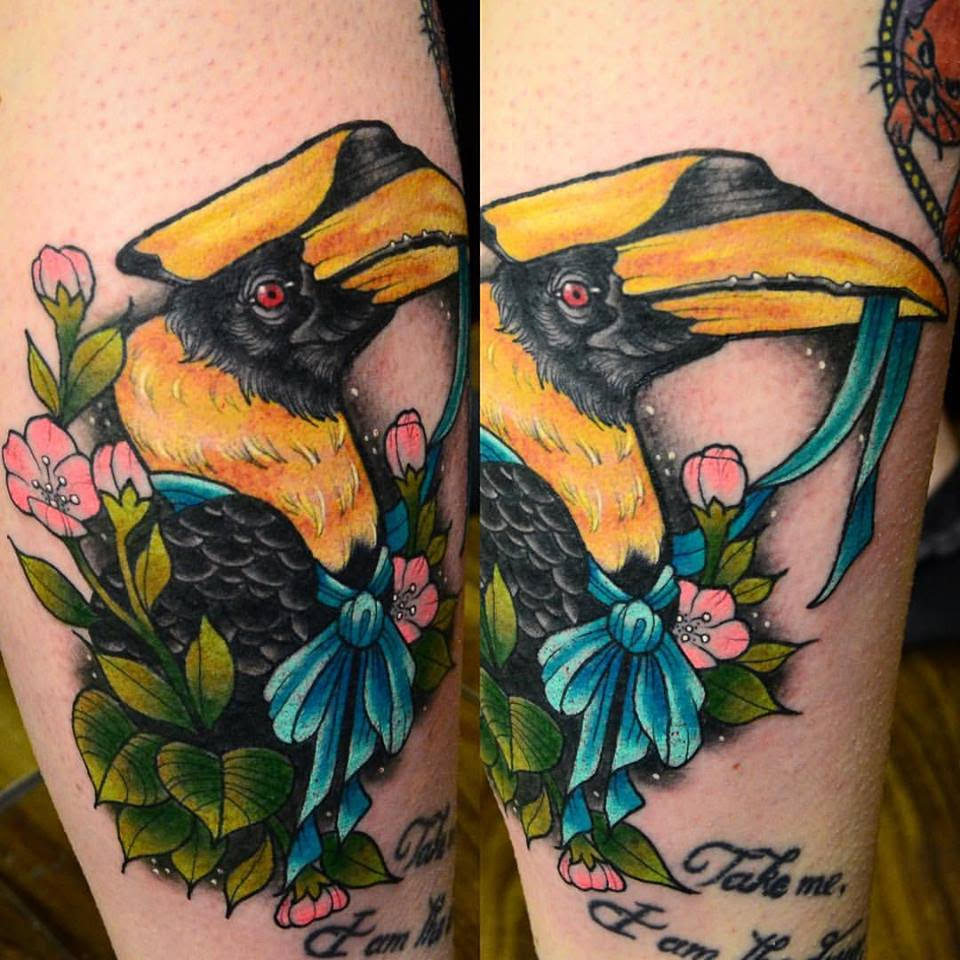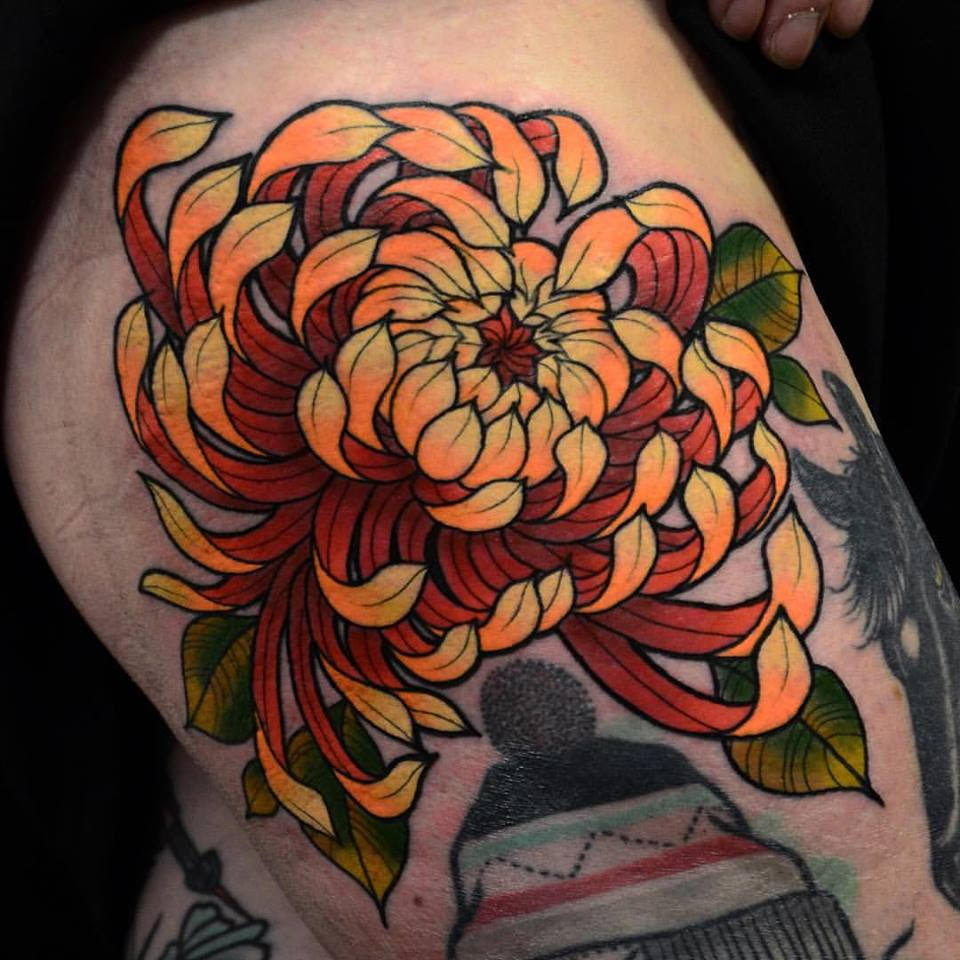Regarded as one of the best small festivals in the UK, Hevy Fest has come back better than ever from its 2013 cancellation. After a smaller but incredible affair in 2014 check out what happened when our music writer Amber Carnegie descended on Port Lympne for the diverse line up they whipped up for 2015.
Thursday 14th of August
Shortly after arriving at Hevy, we soon realised that not only had we brought the wrong tent but that Camp Things & Ink was held together with worn out bamboo, wasn’t entirely waterproof and wouldn’t be around for long.
A fact we learned pretty quickly as the weekend started with some expected thunder and lightening. Lucky for us our lovely neighbours let us throw our belongings into their tents while we helped other drenched campers set up. We then escaped into the larger tents for a good wringing out.
Once we began to resemble ourselves again we headed into the arena to catch the rest of the acoustic stage. Sam Duckworth and Dave McPherson both incited sing-alongs to those who had survived the rain but it was the acoustic set from Jamie Lenman that nearly had us in tears. Reminiscent Reuben tracks like ‘Moving To Blackwater’ and ‘Let’s Stop Hanging Out’ really hit the tone for all of those brought to Hevy this year. Dave McPherson also came back out to join Lenman for ‘I Ain’t Your Boy’ that brought together the camaraderie that you cannot miss at Hevy.
Friday 15th of August

Luke keeping up the caffeine at Hevy
After we assessed Thursday’s damage and sought out breakfast we ventured into the Port Lympne Wild Animal Park. A portion of each ticket sold for Hevy goes towards The Aspinall Foundation, to help protect endangered species, and where possible return them back to the wild. With little else to do before the bands start in the afternoon it’s amazing that you are able to wonder around the park free of charge. You can also pick up an actual meal or even some Kentish Cider if you fancy it.
If that didn’t wake you up, Continents had the task of kicking off the festival from the Main Stage. Despite pretty much baking in the arena the sounds of their upcoming album got people moving and early tracks like ‘Pegasus Pegasus’ began decimating the grass in front of the stage. There is always a place at Hevy for instrumental, post rock bands and Chon certainly proved why. Chon bring movements between the stages to a stand still with riffs that mirror vocal chords in incredible succession. Closing with ‘Perfect Pillow’ with a guitar sequence that will be riddled in your brain for weeks. We highly recommend you check them out.
Even if you’re not into it, Hacktivist certainly got the Hevy party going. If they didn’t have you with ‘Djent In Paris’ then they had us in crowd peer pressure of waving hands to ‘False Idols’. We didn’t know the words but we soon picked them up before we headed to the Third Stage where Heck were destined to make us double check we all still had our limbs. What we were not expecting is the band formally known as Baby Godzilla to induce a stage wide floorshow with the audience as props. Tracks we’d never heard before had the crowd in a frenzy and if you didn’t feel the need to sing along, you’re probably broken inside.
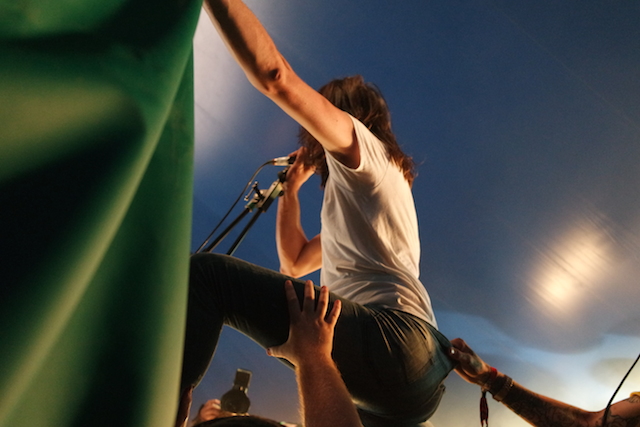
Heck At Hevy
We headed back to the Main Stage for Touché Amore for a completely different feel, the band brought this closer environment as the crowd reached over desperate to shout lyrics. This amazing wave of post-hardcore has this insane ability to unify emotions that were once overlooked or hidden. To have witnessed this at Hevy within a crowd all clearly in touch with every word was striking and completely epitomises Hevy and the love and respect everyone has for the music and its abilities there.
Once we’d all pulled ourselves back together and the iconic intro to ‘Bloodmeat’ kicked in we knew we were in the midst of Protest The Hero. Wilding riffs and lungs you will never quite believe from Rody Walker. With his renowned anecdotes dropping momentum it allowed us a chance to breathe before winding back up into techy sequences and guitars that lick through ‘Clarity’ to see the blur in front of the stage give it one last go.
The Dillinger Escape Plan then called out the sunset with the most unnatural spasms their bodies could muster with ‘Prancer’ opening up the set and the ground. ‘Milk Lizard’s grooving rhythms had us more inclined to dance than to thrash about as the band seemed more and more determined fracture themselves. Although we’ve come to expect this self inflected battering while remaining indefinably tight it’s exceptional to witness every time.
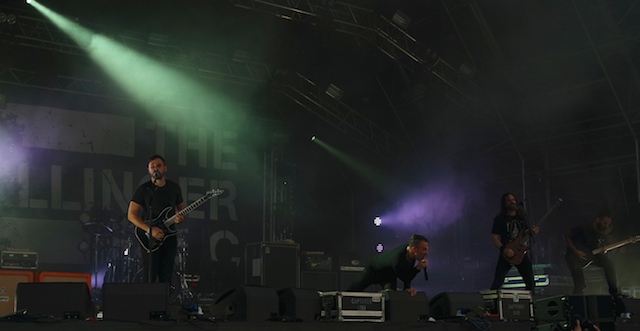
The Dillinger Escape Plan At Hevy
The iconic opening riff to ‘43% Burnt’ ensued madness immediately and carried through to ‘Panasonic Youth’. The crowd completely lost their shit when vocalist Greg Puciato dove into the crowd for ‘Farewell Mona Lisa’ only to immerse back on stage as bodies flung for ‘When I Lost My Bet’. With no time we legged it over to catch the end of Fightstar’s delayed set, seven strings and all. With a feral tent that proved that Fightstar could have headlined a bigger stage they tore out their new track ‘Animal’ with a new synth sound before nailing out titans tracks like ‘Deathcar’ and their first single ‘Palahniuk’s Laughter’. As we held each other up in the swarming stage it was so reminiscent of our swinging emo fringe days that we couldn’t thank Hevy enough for putting something so awesome together.
Coheed And Cambria closed Friday’s live music by playing ‘In Keeping Secrets Of Silent Earth: 3’ in its entirety. Coheed are incomparable, the album a spectacle in itself and it didn’t stop with the album. The encore saw their latest track ‘You’ve Got Spirit Kid’ carry away the audience as the eminent ‘Welcome Home’ took over Port Lympne to show that Hevy is well and truly back.
Saturday 15th of August
Despite some technical hitches the crowd spurred Milk Teeth in some of the freshest sounds that hit Hevy. Their grunge punk rock is something not to be missed and we can’t wait to see them live again. We were then allured into a doomy tent where Hang The Bastard had incited the slugging, aching head-bangs through layers of smoke. And then as if our eyes were deceiving us (they weren’t) a fluorescent pink two piece with a triangle found its way around the Second Stage for HORSE The Band.
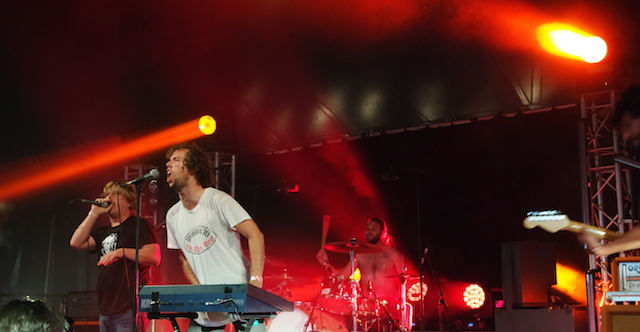
HORSE The Band at Hevy
If you had never had the pleasuring of witnessing these guys before Hevy you were certainly in for a treat. Their sweet set of insanity blew Saturday up only to be followed by The Fall Of Troy on Main Stage. They were the second band of the weekend to play an album in full so when ‘Doppelganger’ kicked off we knew were in for unchartered territory. Within the first track they were a band we regretted never getting into. Impeccable guitar work with catchy rhythms had us all dancing. For an album played on its ten year anniversary The Fall Of Troy not only kept everything so incredibly tight but probably gained a lot of fans who wished they tuned in a long time ago.
The Get Up Kids then followed in full album suit, and although it was now getting slightly tiring it is amazing to see so many albums still have the ability to pull in such crowds. ‘Something To Write Home About’ saw people singing word for word with ‘I’ll Catch You’ holding a quiet moment over the main stage as the album closed.
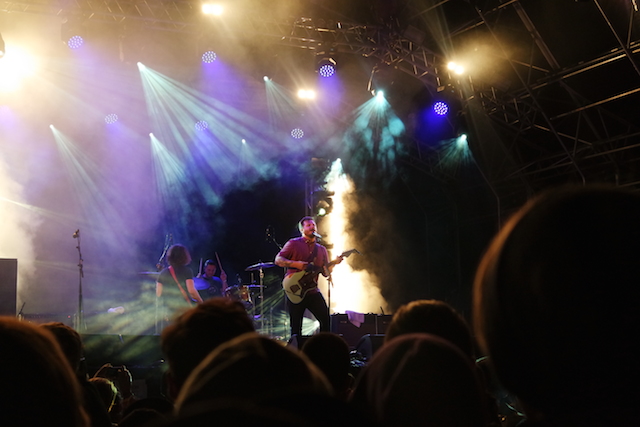
Thrice at Hevy
Headliners Thrice come together like they have never been away. Every track fell into the next and just the intro to ‘Of Dust And Nations’ sparked frenzy. With a varied set list that saw ‘The Artist In The Ambulance’ and ‘Deadbolt’ take off as if it was the early 00’s again the entire campsite was gathered around the Main Stage.
As they closed on 2011’s ‘Anthology’ we couldn’t quite believe that it was over for another year. Hevy have brought us bands in their revival that we could have never expected, what’s for 2016 Hevy?
Did you go to Hevy Fest? What did you think?

